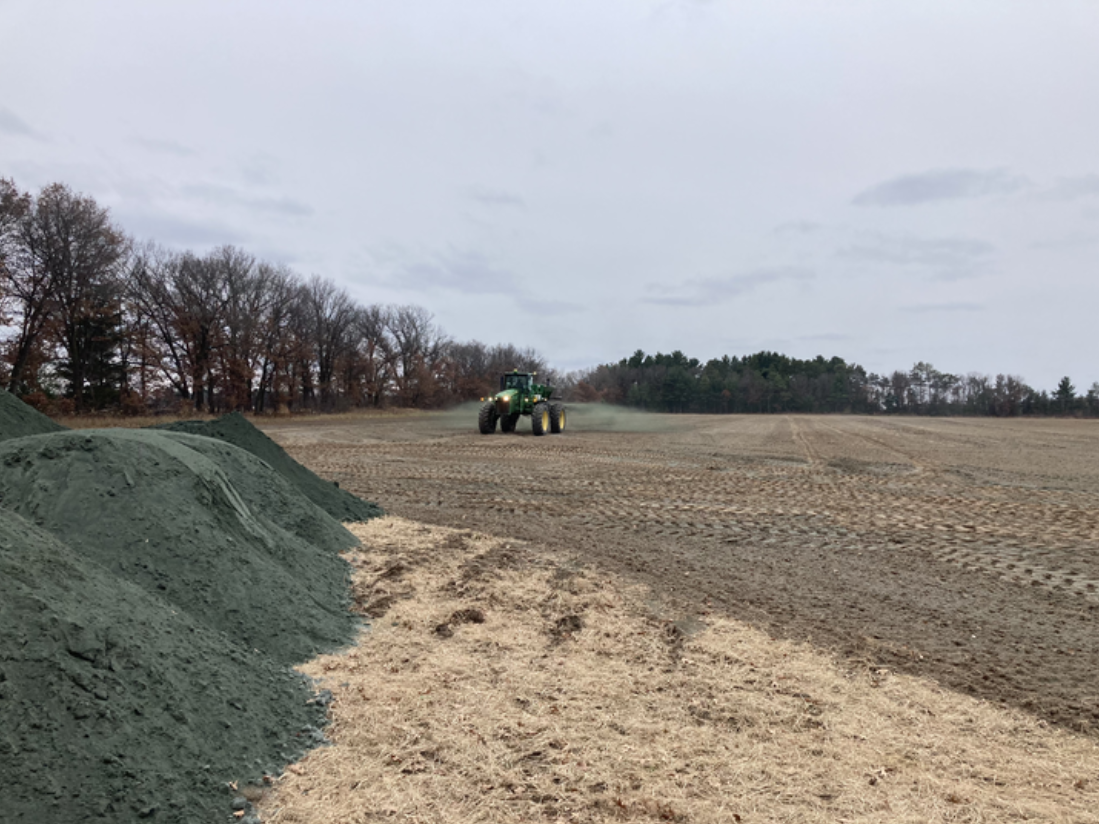Agoro Carbon Alliance Partners with Yale University on Enhanced Rock Weathering Project
To date, Agoro Carbon’s carbon credit program has been solely focused on helping farmers and ranchers implement nature-based agricultural practices such as no-till and cover cropping for row crop farmers and improved grazing and adding biodiversity for ranchers to sequester soil organic carbon. However, we are constantly evaluating new practices that growers can implement that are shown to be effective at storing carbon in the soil or reducing greenhouse gas emissions.
Our Innovative Partnership with Yale University
One such practice that has gained much recent research focus and public attention is the application of finely ground silicate-based rock dust (such as basalt or wollastonite) to cropland or pastureland as a means of sequestering atmospheric carbon into inorganic soil carbon. Agoro Carbon has partnered with Yale University on a USDA-funded Climate Smart Commodity Project to evaluate this practice. Yale leads this project, and Agoro Carbon has partnered to help recruit growers to enroll.
Enhanced Rock Weathering, A Short Explanation
This practice involves spreading silicate rock dust on fields as depicted in the image below. When rainfall, with dissolved atmospheric carbon dioxide, falls on the soil where the rock dust has been applied, it dissolves the material, releasing calcium (Ca) and magnesium (Mg) ions into the soil water. These ions are then transformed into bicarbonate ions via a chemical reaction with atmospheric carbon dioxide.
The weathering products, and the trapped carbon, are then carried by groundwater flow to rivers and, eventually, to the ocean. In the ocean, the dissolved inorganic carbon will stable sequestering atmospheric carbon dioxide for 10’s of thousands of years. The process is called enhanced weathering, and carbon credits generated via this practice are predicted to have high value because of the permanence of the carbon sequestered.

Soil Health Benefits
In addition to the potential carbon credit revenue, silicate application can provide additional benefits, like replacing the application of agricultural lime, since it has the ability to raise soil pH in acidic soils as lime application. Research has also shown that there may be crop yield benefits associated with this practice because silicate application improves many soil health properties.
The Work Ahead
As previously mentioned, Agoro Carbon’s role in this project is to help recruit growers to participate, specifically growers in the Wisconsin area. Emphasis will be placed on smaller acreages and disadvantaged growers. Farmers producing vegetables on smaller acreages, row-crop grain growers, and those growing pasture for animals are all welcome to participate. Noah Planavsky, Professor of Geochemistry at Yale University and the lead on the grant said “soil pH management is an essential aspect of having productive fields. This is a way to achieve that while bringing income for growers”.
Farmers will receive $50/acre in funding with a minimum of $2000 base payment for acreages less than 40. The project will cover all costs associated with sourcing, trucking, and spreading of the rock dust. All sources of rock dust will be rigorously tested before application to ensure they are up to standard and free of heavy metals or other contaminants. All farms involved in the pilot program will have their fields routinely monitored by the Yale team. Soil sampling will be conducted primarily to monitor rock weathering rates, soil pH and fertility levels. Agoro Carbon’s Agronomist Seth Urbanowitz says about this project, “This is an opportunity for a variety of growers to benefit from a safe material that improves soil health and chemical properties of soil as well as contributing to the research of a cutting edge climate solution – all while being remunerated for their efforts.”
Questions about this project? Contact Seth Urbanowitz, Technical Agronomist, Agoro Carbon: seth.urbanowitz@agorocarbon.com